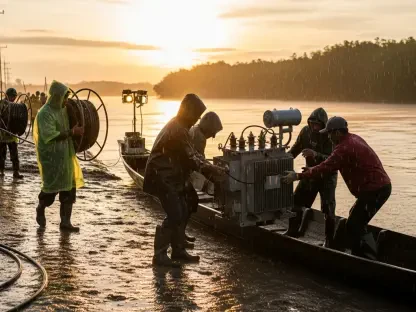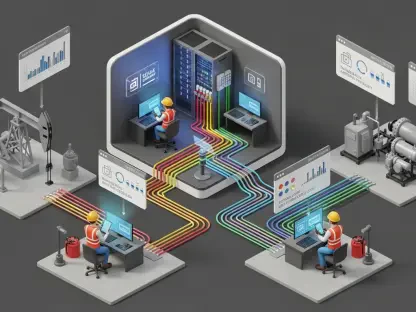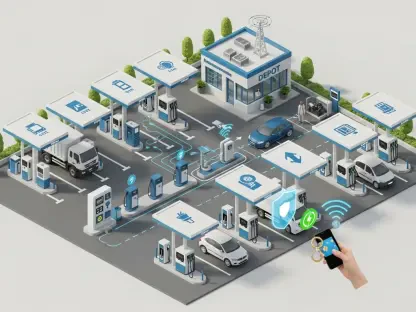In a world where power outages can cripple entire cities in mere minutes, the backbone of America’s electric grid often goes unnoticed until disaster strikes, leaving communities vulnerable. Picture a fierce storm tearing through a coastal region, with winds howling at over 80 miles per hour, toppling trees and snapping power lines. Amidst this chaos, the unsung heroes—grounding conductors—stand as the last line of defense, ensuring that fault currents are safely diverted and equipment remains protected. These critical components bear the brunt of nature’s fury and human demands, yet their strength is rarely celebrated. What makes conductor durability so vital to keeping the lights on, and why does it deserve urgent attention in 2025?
The significance of this issue cannot be overstated. As the electric grid expands to meet soaring energy demands and integrates complex renewable systems, the reliability of every component becomes paramount. Grounding conductors, though often hidden underground or tucked away in substations, are central to preventing catastrophic failures that could cost millions in damages and endanger public safety. This exploration delves into the pivotal role of conductor strength, uncovering how it underpins grid resilience and why utilities must prioritize it in an era of unprecedented challenges.
The Silent Guardians of Power Supply
Beneath the towering poles and buzzing transformers lies an invisible network of grounding conductors, quietly ensuring the stability of the entire electric system. These conductors act as pathways for fault currents, diverting dangerous surges caused by lightning strikes or equipment malfunctions into the earth. Without their steadfast performance, the risk of fires, equipment damage, and widespread blackouts skyrockets, especially during extreme weather events that test the grid’s limits.
Their role extends beyond mere electrical function; they endure relentless mechanical stress from soil shifts, temperature fluctuations, and physical impacts. A single weak conductor can compromise an entire grounding system, leading to cascading failures across transmission lines or substations. This vulnerability highlights the need for materials that can withstand decades of strain without buckling under pressure, forming the foundation of a dependable power network.
Navigating the Complexities of a Modern Grid
Today’s electric grid is a labyrinth of innovation, stretching across vast terrains and diving underground to deliver power to remote communities. The integration of renewable energy sources like solar and wind has added new layers of complexity, increasing the number of grounding points and exposing conductors to harsher conditions. From corrosive coastal soils to the thermal extremes of desert regions, these environmental factors relentlessly challenge the integrity of grid infrastructure.
Moreover, urban expansion and underground installations introduce unique stressors such as vibrations from heavy traffic and moisture infiltration. These conditions can degrade weaker materials over time, leading to broken connections or increased electrical resistance. Such failures not only disrupt power delivery but also pose serious safety hazards, emphasizing the urgent need for conductors that can endure the evolving demands of a 21st-century grid.
The Critical Role of Conductor Durability
At the heart of grid resilience lies the mechanical strength of grounding conductors, a factor that often determines whether a system survives a crisis. Robust conductors maintain tight ground connections even under intense fault currents, preventing dangerous voltage spikes that could damage critical equipment. Their ability to resist deformation or breakage ensures consistent performance, especially in high-risk areas prone to storms or seismic activity.
Traditional materials like pure copper, while excellent for conductivity, often fall short in tensile strength, stretching or snapping under mechanical strain. In contrast, Copper-Clad Steel (CCS) conductors offer a powerful solution by combining copper’s electrical efficiency with steel’s durability. This hybrid design has proven effective in reducing maintenance costs by up to 30% in some substations, showcasing how prioritizing strength translates into tangible reliability across diverse environments.
Voices from the Field and Cutting-Edge Solutions
Industry experts and utility leaders alike underscore the transformative impact of durable conductors on grid stability. Representatives from trusted manufacturers like Copperweld® highlight that advanced metallurgical techniques ensure the copper-steel bond in CCS conductors remains intact for decades, even under harsh conditions. Their rigorous quality controls set a benchmark for reliability, offering utilities confidence in long-term performance.
Beyond technical innovation, broader trends reveal a unified push toward grid hardening as energy demands grow from 2025 onward. Utilities are increasingly adopting CCS not only for its strength but also for its low scrap value, which deters theft—a persistent problem costing millions annually. Stories from rural utilities reveal how switching to CCS has slashed vandalism incidents, proving that conductor choice can address both operational and economic challenges in tandem.
Strategies for Fortifying Tomorrow’s Grid
Utilities looking to bolster grid reliability can take concrete steps to prioritize conductor strength in their infrastructure planning. Selecting high-quality CCS conductors with proven bonding integrity is essential to resist environmental wear, such as corrosion from groundwater or stress from soil movement. Partnering with reputable manufacturers ensures consistent material performance, reducing the likelihood of premature failures that could disrupt service.
Additionally, assessing installation sites for specific risks—whether flooding in low-lying areas or high winds in coastal zones—enables tailored solutions that enhance durability. Investing in robust conductors is not merely a technical decision but a strategic one, promising significant cost savings through reduced repairs and bolstered public trust. By embedding strength into every layer of grid design, utilities can build systems capable of withstanding the unpredictable challenges ahead.
Reflecting on a Resilient Path Forward
Looking back, the journey to understanding conductor strength revealed a profound truth: the smallest components often hold the greatest power to safeguard entire communities. Grounding conductors, though hidden from view, have proven their worth time and again in averting disasters and maintaining the flow of electricity through countless storms and surges. Their durability stands as a silent testament to the ingenuity of modern engineering.
Moving ahead, utilities are urged to embrace innovative materials like Copper-Clad Steel as a cornerstone of grid modernization. Collaborative efforts with manufacturers to refine quality standards promise even greater advancements in conductor performance. As the energy landscape continues to evolve, a renewed focus on building stronger, smarter grids offers hope for a future where power outages become a rarity rather than a recurring threat.









